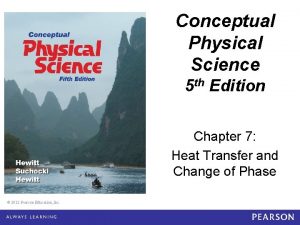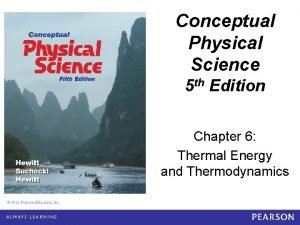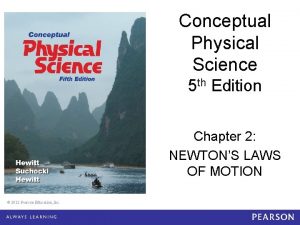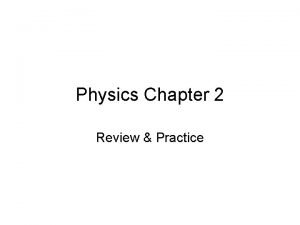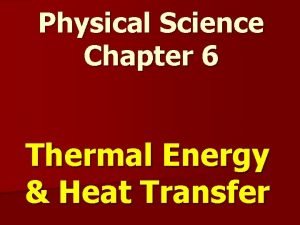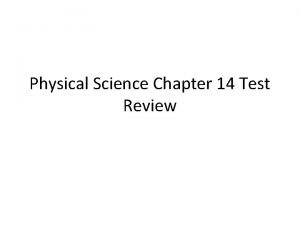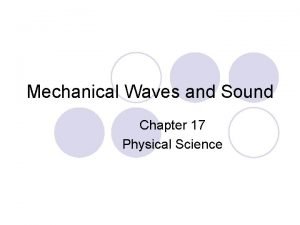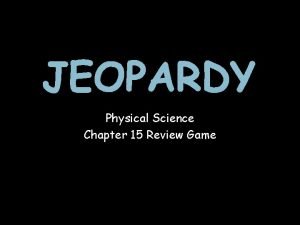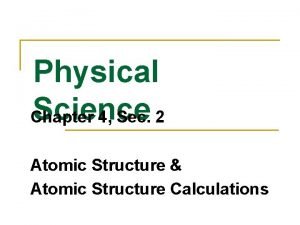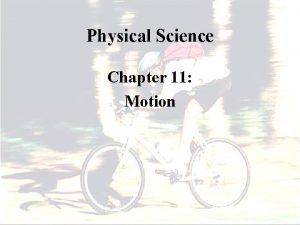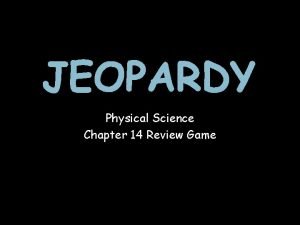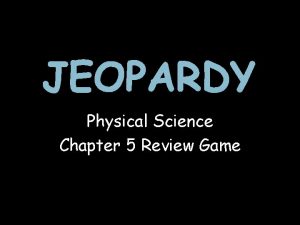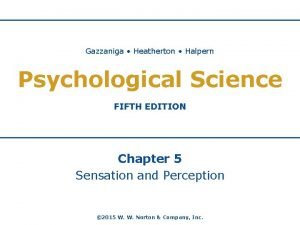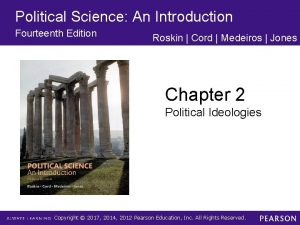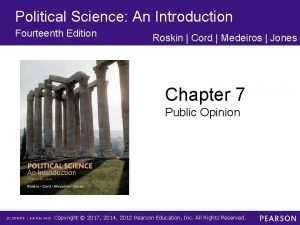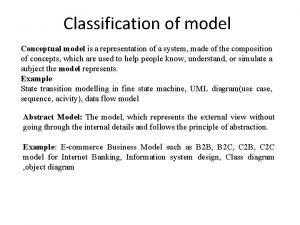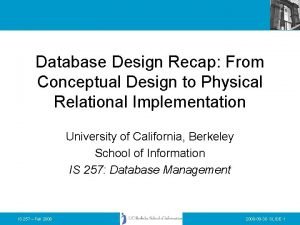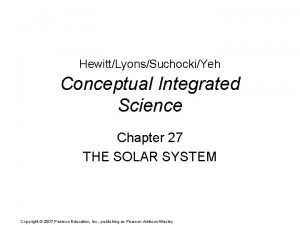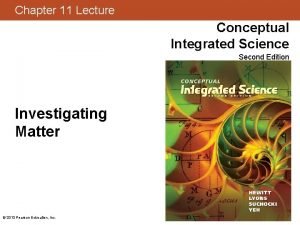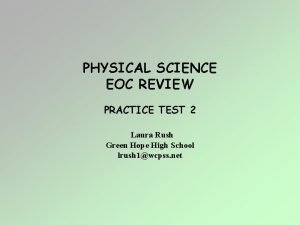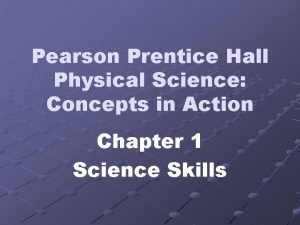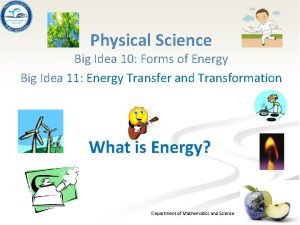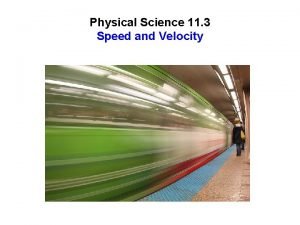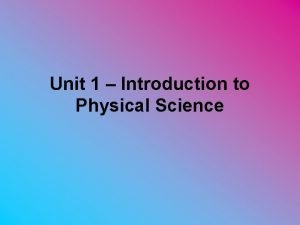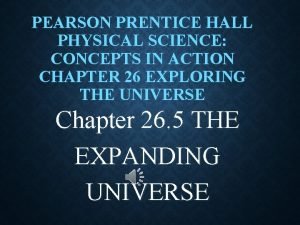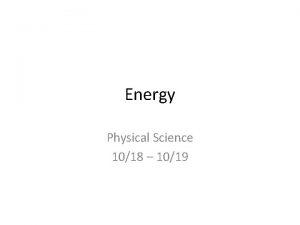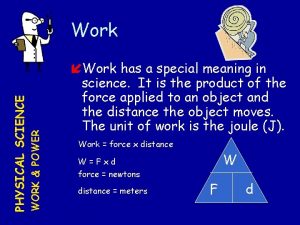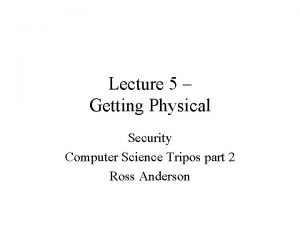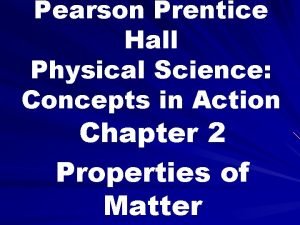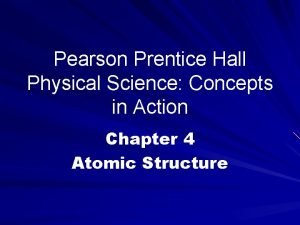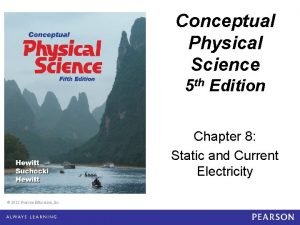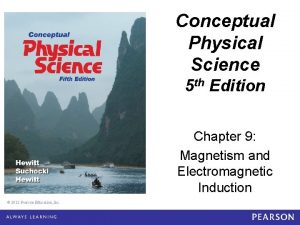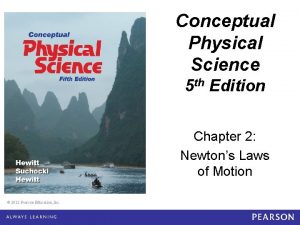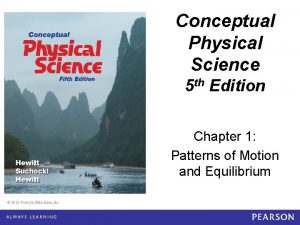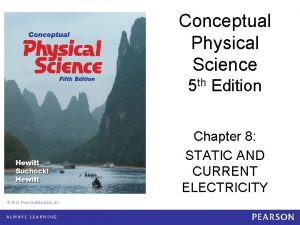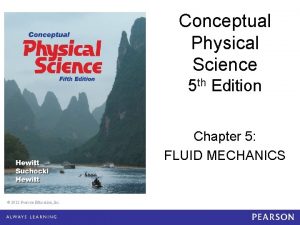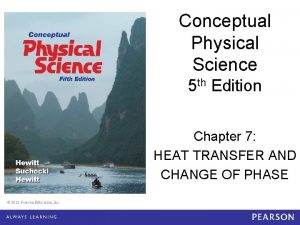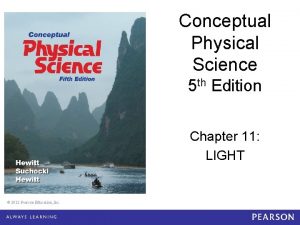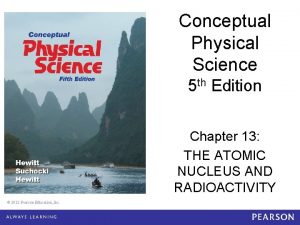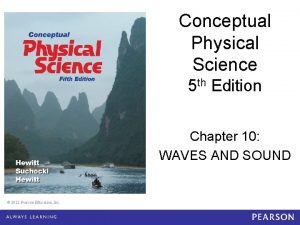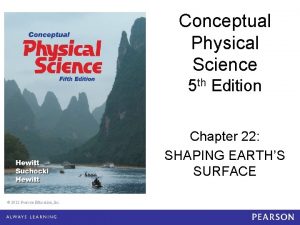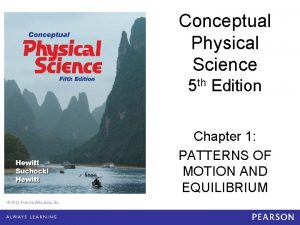Conceptual Physical Science 5 th Edition Chapter 4





























































- Slides: 61

Conceptual Physical Science 5 th Edition Chapter 4: GRAVITY, PROJECTILES, AND SATELLITES © 2012 Pearson Education, Inc.

Conceptual Physical Science 5 e — Chapter 4 Gravity was discovered by A. B. C. D. Aristotle. Galileo. Isaac Newton. early humans. © 2012 Pearson Education, Inc.

Conceptual Physical Science 5 e — Chapter 4 Gravity was discovered by A. B. C. D. Aristotle. Galileo. Isaac Newton. early humans. Explanation: Early humans discovered gravity. Newton’s discovery was that gravity is universal—existing everywhere. © 2012 Pearson Education, Inc.

Conceptual Physical Science 5 e — Chapter 4 The concept of free-falling objects applies to A. B. C. D. falling apples. the Moon. Both of the above. Neither of the above. © 2012 Pearson Education, Inc.

Conceptual Physical Science 5 e — Chapter 4 The concept of free-falling objects applies to A. B. C. D. falling apples. the Moon. Both of the above. Neither of the above. © 2012 Pearson Education, Inc.

Conceptual Physical Science 5 e — Chapter 4 If the distance between two planets doubles, the force of gravity between them A. B. C. D. doubles. quadruples. decreases to half. decreases to one-quarter. © 2012 Pearson Education, Inc.

Conceptual Physical Science 5 e — Chapter 4 If the distance between two planets doubles, the force of gravity between them A. B. C. D. doubles. quadruples. decreases to half. decreases to one-quarter. © 2012 Pearson Education, Inc.

Conceptual Physical Science 5 e — Chapter 4 If the distance between two planets decreases to half, the force of gravity between them A. B. C. D. doubles. quadruples. decreases to half. decreases to one-quarter. © 2012 Pearson Education, Inc.

Conceptual Physical Science 5 e — Chapter 4 If the distance between two planets decreases to half, the force of gravity between them A. B. C. D. doubles. quadruples. decreases to half. decreases to one-quarter. Explanation: Twice as close means four times the force (inverse-square law). Can you see that if the distance were instead doubled, the force would be one-quarter? © 2012 Pearson Education, Inc.

Conceptual Physical Science 5 e — Chapter 4 When the distance between two stars decreases by -tenth, the force between them A. B. C. D. decreases to one-tenth. decreases to one-hundredth. increases 10 times as much. increases 100 times as much. © 2012 Pearson Education, Inc. one

Conceptual Physical Science 5 e — Chapter 4 When the distance between two stars decreases by -tenth, the force between them A. B. C. D. one decreases to one-tenth. decreases to one-hundredth. increases 10 times as much. increases 100 times as much. Explanation: This refers to the inverse-square law of gravity. Ten times closer means 100 times the force. Can you see if the distance were increased by ten the force would be 1/100? © 2012 Pearson Education, Inc.

Conceptual Physical Science 5 e — Chapter 4 Consider light from a candle. If you’re five times as far away, its brightness will look about A. B. C. D. one-fifth as much. one-tenth as much. one twenty-fifth as much. the same brightness at any reasonable distance. © 2012 Pearson Education, Inc.

Conceptual Physical Science 5 e — Chapter 4 Consider light from a candle. If you’re five times as far away, its brightness will look about A. B. C. D. one-fifth as much. one-tenth as much. one twenty-fifth as much. the same brightness at any reasonable distance. Explanation: Five times as far, according to the inverse-square law, is 1/25 the brightness. Likewise for the sound of a chirping cricket! © 2012 Pearson Education, Inc.

Conceptual Physical Science 5 e — Chapter 4 Consider a space probe at a distance five times Earth’s radius. Compared with gravitational force at Earth’s surface, its gravitational attraction to Earth at this distance is about A. B. C. D. one-fifth as much. one-tenth as much. one twenty-fifth as much. the same gravitation at any reasonable distance. © 2012 Pearson Education, Inc.

Conceptual Physical Science 5 e — Chapter 4 Consider a space probe at a distance five times Earth’s radius. Compared with gravitational force at Earth’s surface, its gravitational attraction to Earth at this distance is about A. B. C. D. one-fifth as much. one-tenth as much. one twenty-fifth as much. the same gravitation at any reasonable distance. Explanation: Five times as far (inverse-square law) means 1/25 the gravitational attraction. © 2012 Pearson Education, Inc.

Conceptual Physical Science 5 e — Chapter 4 If the Earth’s radius somehow shrunk, your weight on the shrunken surface would be A. B. C. D. less. more. unchanged. none of the above. © 2012 Pearson Education, Inc.

Conceptual Physical Science 5 e — Chapter 4 If the Earth’s radius somehow shrunk, your weight on the shrunken surface would be A. B. C. D. less. more. unchanged. none of the above. Comment: The idea of surface force increasing when a star shrinks leads to the huge forces near an ultimate shrunken star—a black hole. © 2012 Pearson Education, Inc.

Conceptual Physical Science 5 e — Chapter 4 If the Sun were twice as massive, its pull on Earth would be A. B. C. D. unchanged. twice as much. half as much. four times as much. © 2012 Pearson Education, Inc.

Conceptual Physical Science 5 e — Chapter 4 If the Sun were twice as massive, its pull on Earth would be A. B. C. D. unchanged. twice as much. half as much. four times as much. Explanation: Let the equation for gravity guide your thinking. When one mass is doubled, with all else being the same, the force doubles. © 2012 Pearson Education, Inc.

Conceptual Physical Science 5 e — Chapter 4 Strictly speaking, compared with your weight on the ground, your weight at the top of a very tall ladder would be A. B. C. D. less. more. no different, really. none of the above. © 2012 Pearson Education, Inc.

Conceptual Physical Science 5 e — Chapter 4 Strictly speaking, compared with your weight on the ground, your weight at the top of a very tall ladder would be A. B. C. D. less. more. no different, really. none of the above. Explanation: This follows from the inverse-square law. © 2012 Pearson Education, Inc.

Conceptual Physical Science 5 e — Chapter 4 According to the equation for gravity, if you travel far enough from Earth, the gravitational influence of Earth will A. B. C. D. reach zero. still be there. actually increase. None of the above. © 2012 Pearson Education, Inc.

Conceptual Physical Science 5 e — Chapter 4 According to the equation for gravity, if you travel far enough from Earth, the gravitational influence of Earth will A. B. C. D. reach zero. still be there. actually increase. None of the above. Explanation: Look at the gravity equation: as d approaches infinity, F approaches zero—but never reaches zero. © 2012 Pearson Education, Inc.

Conceptual Physical Science 5 e — Chapter 4 You are weightless when you are A. B. C. D. in free fall. without a support force. infinitely away from all mass. All of the above. © 2012 Pearson Education, Inc.

Conceptual Physical Science 5 e — Chapter 4 You are weightless when you are A. B. C. D. in free fall. without a support force. infinitely away from all mass. All of the above. © 2012 Pearson Education, Inc.

Conceptual Physical Science 5 e — Chapter 4 When an astronaut in orbit around Earth is weightless, he or she is A. B. C. D. beyond the pull of Earth’s gravity. still in the grip of Earth’s gravity. in the grip of interstellar gravity. None of the above. © 2012 Pearson Education, Inc.

Conceptual Physical Science 5 e — Chapter 4 When an astronaut in orbit around Earth is weightless, he or she is A. B. C. D. beyond the pull of Earth’s gravity. still in the grip of Earth’s gravity. in the grip of interstellar gravity. None of the above. Comment: If the astronaut were not in the grip of Earth’s gravity, would his or her circling the Earth occur? Interstellar gravity plays a significantly lesser role. © 2012 Pearson Education, Inc.

Conceptual Physical Science 5 e — Chapter 4 When you stand at rest on a weighing scale, the force due to gravity on you is A. B. C. D. equal in magnitude to the support force of the scale. almost equal to the support force of the scale. actually absent. None of the above. © 2012 Pearson Education, Inc.

Conceptual Physical Science 5 e — Chapter 4 When you stand at rest on a weighing scale, the force due to gravity on you is A. B. C. D. equal in magnitude to the support force of the scale. almost equal to the support force of the scale. actually absent. None of the above. © 2012 Pearson Education, Inc.

Conceptual Physical Science 5 e — Chapter 4 Inhabitants in the International Space Station orbiting Earth are A. B. C. D. weightless. in the grip of Earth’s gravity. without a support force. All of the above. © 2012 Pearson Education, Inc.

Conceptual Physical Science 5 e — Chapter 4 Inhabitants in the International Space Station orbiting Earth are A. B. C. D. weightless. in the grip of Earth’s gravity. without a support force. All of the above. © 2012 Pearson Education, Inc.

Conceptual Physical Science 5 e — Chapter 4 A ball rolls off the edge of a table and hits the floor below. If the ball’s speed were somewhat greater, the time to hit the floor would be A. B. C. less the same. more. © 2012 Pearson Education, Inc.

Conceptual Physical Science 5 e — Chapter 4 A ball rolls off the edge of a table and hits the floor below. If the ball’s speed were somewhat greater, the time to hit the floor would be A. B. C. less the same. more. © 2012 Pearson Education, Inc.

Conceptual Physical Science 5 e — Chapter 4 A horizontally-moving tennis ball barely clears the net and barely lands just within the court. If the ball were moving a bit faster it would land A. B. C. also within the court. beyond the court. a bit longer in time. © 2012 Pearson Education, Inc.

Conceptual Physical Science 5 e — Chapter 4 A horizontally-moving tennis ball barely clears the net and barely lands just within the court. If the ball were moving a bit faster it would land A. B. C. also within the court. beyond the court. a bit longer in time. Explanation: Assuming no exotic spin effects, the time of the ball in the air would be the same whatever its speed. But a bit faster would send it beyond the court’s border. © 2012 Pearson Education, Inc.

Conceptual Physical Science 5 e — Chapter 4 The positions of a cannonball are shown at various times when air resistance isn’t a factor. If the speed were significantly greater, how high above ground level would the cannonball be at 4 seconds? A. B. C. D. 45 m. 60 m. 80 m. None of these. © 2012 Pearson Education, Inc.

Conceptual Physical Science 5 e — Chapter 4 The positions of a cannonball are shown at various times when air resistance isn’t a factor. If the speed were significantly greater, how high above ground level would the cannonball be at 4 seconds? A. B. C. D. 45 m. 60 m. 80 m. None of these. Explanation: Vertical distance is given by ½ gt 2 = ½ (10 m/s 2)(4 s)2 = 80 m. © 2012 Pearson Education, Inc.

Conceptual Physical Science 5 e — Chapter 4 Figure 4. 18 assumes no air resistance. If air resistance were a significant factor, at 3 seconds the cannonball would be A. B. C. D. lower than 45 -m high. at a reduced horizontal distance. both of these. neither of these. © 2012 Pearson Education, Inc.

Conceptual Physical Science 5 e — Chapter 4 Figure 4. 18 assumes no air resistance. If air resistance were a significant factor, at 3 seconds the cannonball would be A. B. C. D. lower than 45 -m high. at a reduced horizontal distance. both of these. neither of these. Explanation: Air resistance would lessen both its vertical and its horizontal components of velocity. So it wouldn’t go as high nor as far horizontally. © 2012 Pearson Education, Inc.

Conceptual Physical Science 5 e — Chapter 4 A projectile follows a curved path A. B. C. D. when it crosses a gravitational field. due to a combination of constant horizontal motion and accelerated downward motion. called a parabola. All of the above. © 2012 Pearson Education, Inc.

Conceptual Physical Science 5 e — Chapter 4 A projectile follows a curved path A. B. C. D. when it crosses a gravitational field. due to a combination of constant horizontal motion and accelerated downward motion. called a parabola. All of the above. © 2012 Pearson Education, Inc.

Conceptual Physical Science 5 e — Chapter 4 The speed of a bowling ball rolling along a smooth alley is A. B. C. D. not affected by gravity. constant. Both of the above. None of the above. © 2012 Pearson Education, Inc.

Conceptual Physical Science 5 e — Chapter 4 The speed of a bowling ball rolling along a smooth alley is A. B. C. D. not affected by gravity. constant. Both of the above. None of the above. © 2012 Pearson Education, Inc.

Conceptual Physical Science 5 e — Chapter 4 When no air resistance acts on a projectile, its horizontal acceleration is A. B. C. D. g. at right angles to g. centripetal. zero. © 2012 Pearson Education, Inc.

Conceptual Physical Science 5 e — Chapter 4 When no air resistance acts on a projectile, its horizontal acceleration is A. B. C. D. g. at right angles to g. centripetal. zero. © 2012 Pearson Education, Inc.

Conceptual Physical Science 5 e — Chapter 4 Without air resistance, the time for a vertically tossed ball to return to where it was thrown from is A. B. C. D. 10 m/s for every second in the air. the same as the time going upward. less than the time going upward. more than the time going upward. © 2012 Pearson Education, Inc.

Conceptual Physical Science 5 e — Chapter 4 Without air resistance, the time for a vertically tossed ball to return to where it was thrown from is A. B. C. D. 10 m/s for every second in the air. the same as the time going upward. less than the time going upward. more than the time going upward. © 2012 Pearson Education, Inc.

Conceptual Physical Science 5 e — Chapter 4 With air resistance, the time for a vertically tossed ball to return to where it was thrown from is A. B. C. D. 10 m/s for every second in the air. the same as the time going upward. less than the time going upward. more than the time going upward. © 2012 Pearson Education, Inc.

Conceptual Physical Science 5 e — Chapter 4 With air resistance, the time for a vertically tossed ball to return to where it was thrown from is A. B. C. D. 10 m/s for every second in the air. the same as the time going upward. less than the time going upward. more than the time going upward. Explanation: Consider a feather tossed upward. It reaches its zenith rather quickly but falls back to its starting place slowly. The same is true of a ball tossed in air, though not as pronounced. © 2012 Pearson Education, Inc.

Conceptual Physical Science 5 e — Chapter 4 When air resistance is negligible, the component of velocity that doesn’t change for a projectile is the A. B. C. D. horizontal component. vertical component. a combination of horizontal and vertical components. None of the above. © 2012 Pearson Education, Inc.

Conceptual Physical Science 5 e — Chapter 4 When air resistance is negligible, the component of velocity that doesn’t change for a projectile is the A. B. C. D. horizontal component. vertical component. a combination of horizontal and vertical components. None of the above. Explanation: That’s because there is no horizontal force. What can you say about the vertical component of velocity? © 2012 Pearson Education, Inc.

Conceptual Physical Science 5 e — Chapter 4 Air resistance on a projectile A. B. C. D. lessens its range. lessens its height. Both of the above. None of the above. © 2012 Pearson Education, Inc.

Conceptual Physical Science 5 e — Chapter 4 Air resistance on a projectile A. B. C. D. lessens its range. lessens its height. Both of the above. None of the above. © 2012 Pearson Education, Inc.

Conceptual Physical Science 5 e — Chapter 4 The first person(s) to publish writings about Earth satellites was A. B. C. D. Aristotle. Isaac Newton. Albert Einstein. Hewitt, Suchocki, and Hewitt. © 2012 Pearson Education, Inc.

Conceptual Physical Science 5 e — Chapter 4 The first person(s) to publish writings about Earth satellites was A. B. C. D. Aristotle. Isaac Newton. Albert Einstein. Hewitt, Suchocki, and Hewitt. © 2012 Pearson Education, Inc.

Conceptual Physical Science 5 e — Chapter 4 In a circular orbit, the gravitational force on a satellite is A. B. C. D. constant in magnitude. at right angles to satellite motion. directed toward Earth. All of the above. © 2012 Pearson Education, Inc.

Conceptual Physical Science 5 e — Chapter 4 In a circular orbit, the gravitational force on a satellite is A. B. C. D. constant in magnitude. at right angles to satellite motion. directed toward Earth. All of the above. © 2012 Pearson Education, Inc.

Conceptual Physical Science 5 e — Chapter 4 A satellite in elliptical orbit about Earth travels fastest when it moves A. B. C. D. close to Earth. far from Earth. in either direction—the same everywhere. between the near and far points from Earth. © 2012 Pearson Education, Inc.

Conceptual Physical Science 5 e — Chapter 4 A satellite in elliptical orbit about Earth travels fastest when it moves A. B. C. D. close to Earth. far from Earth. in either direction—the same everywhere. between the near and far points from Earth. © 2012 Pearson Education, Inc.

Conceptual Physical Science 5 e — Chapter 4 A satellite in orbit around the Earth is above Earth’s A. B. C. D. atmosphere. gravitational field. Both of the above. Neither of the above. © 2012 Pearson Education, Inc.

Conceptual Physical Science 5 e — Chapter 4 A satellite in orbit around the Earth is above Earth’s A. B. C. D. atmosphere. gravitational field. Both of the above. Neither of the above. Explanation: Don’t say above Earth’s gravitational field! If it were, it wouldn’t circle Earth. © 2012 Pearson Education, Inc.
 Conceptual physical science 5th edition
Conceptual physical science 5th edition Bimetallic strip
Bimetallic strip Conceptual physical science 5th edition
Conceptual physical science 5th edition Conceptual physical science practice sheet chapter 2
Conceptual physical science practice sheet chapter 2 Mind map of branches of science
Mind map of branches of science Natural science vs physical science
Natural science vs physical science What is your favorite subject answer?
What is your favorite subject answer? Using mis (10th edition) 10th edition
Using mis (10th edition) 10th edition Zulily case study
Zulily case study Physics chapter 2 review
Physics chapter 2 review Chapter 6 physical science
Chapter 6 physical science Physical science chapter 14 test
Physical science chapter 14 test Which travels along a surface separating two media
Which travels along a surface separating two media Chapter 15 review physical science
Chapter 15 review physical science Chapter 4 review physical science
Chapter 4 review physical science Chapter 11 physical science
Chapter 11 physical science Chapter 14 review physical science
Chapter 14 review physical science Physical science chapter 5 review
Physical science chapter 5 review Physical science chapter 6 review answers
Physical science chapter 6 review answers Chapter 16 review physical science
Chapter 16 review physical science Chemistry the central science 14th edition
Chemistry the central science 14th edition Biological science 6th edition
Biological science 6th edition Todd f. heatherton
Todd f. heatherton The fundamentals of political science research 2nd edition
The fundamentals of political science research 2nd edition Political science 14th edition
Political science 14th edition Political science 14th edition
Political science 14th edition Science power 9 atlantic edition
Science power 9 atlantic edition Conceptual physical and mathematical models are used to
Conceptual physical and mathematical models are used to Conceptual design database
Conceptual design database Conceptual integrated science explorations
Conceptual integrated science explorations Pearson physics
Pearson physics What is conceptual framework of science education
What is conceptual framework of science education Pricing strategies in marketing
Pricing strategies in marketing What is physical fitness test in mapeh
What is physical fitness test in mapeh Sains pada kurikulum paud
Sains pada kurikulum paud Periodic table jeopardy
Periodic table jeopardy Physical science jeopardy
Physical science jeopardy Physical science eoc practice test
Physical science eoc practice test Physical science eoc review
Physical science eoc review Chapter 4 section 1 work and machines answer key
Chapter 4 section 1 work and machines answer key Big idea 8 properties of matter
Big idea 8 properties of matter Physical science lecture notes
Physical science lecture notes Pearson physical science concepts in action answers
Pearson physical science concepts in action answers Physical science force
Physical science force Pascc
Pascc What is displacement in physical science
What is displacement in physical science What is energy in science
What is energy in science Velocity physical science
Velocity physical science Exploring physical science
Exploring physical science Waves physics pdf
Waves physics pdf The science duo physical and chemical changes
The science duo physical and chemical changes K h d m d c m chart
K h d m d c m chart Testimonial evidence examples
Testimonial evidence examples Pearson physical science concepts in action
Pearson physical science concepts in action Physical science
Physical science Physical
Physical Physical science
Physical science Physical science 436
Physical science 436 Physical security computer science
Physical security computer science Physical science bell ringers
Physical science bell ringers Chemical property definition
Chemical property definition Pearson physical science concepts in action
Pearson physical science concepts in action
